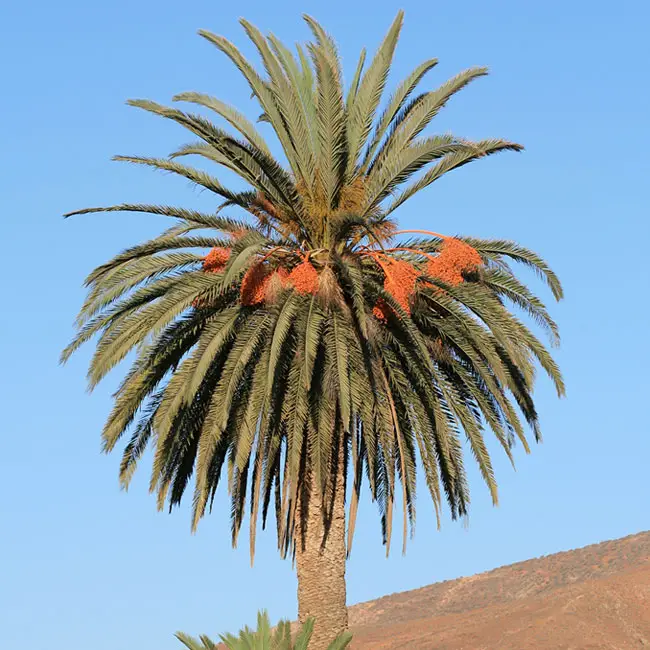
The Canary Date Palm Tree, scientifically known as Phoenix canariensis, is a majestic and iconic palm species native to the Canary Islands. It is renowned for its grandeur, often reaching towering heights of up to 60-70 feet, with a crown spread of 20-40 feet.
The Canary Date Palm produces small, date-like fruits that are not typically consumed by humans but are a valuable food source for birds and wildlife. This palm species is highly adaptable and thrives in a range of climates, making it a popular choice for landscaping in various regions around the world.
Quick Facts:
| Scientific name: | Phoenix canariensis |
| Common names: | Canary Island Date Palm, Canary Palm, Pineapple Palm, and Canary Island Palm. |
| Origin: | Native to Canary Islands and North Africa. |
| Growth Rate: | Slow. Up to 40 ft tall and 20 ft wide. |
| Cold Tolerance: | USDA Zones 8b (15 – 20 F) to 11 (above 40 F) |
| Light Req: | Full sun. |
| Water Req: | Moderate. Drought tolerant. |
| Soil Req: | Widely adaptable, well-drained. |
| Fruit: | Orange. Edible but not tasty. |
| Propagation: | Seed, germinating in 2-3 months. |
Canary Date Palm Appearance
The Canary Date Palm is a special kind of palm tree known for its impressive appearance. It has a strong and tall trunk that stands on its own, and it can grow very high, sometimes reaching up to 60 to 70 feet.
The trunk of this palm tree isn’t just tall; it’s also interesting to look at. It has a unique pattern of diamond-shaped marks from old leaves, which makes it look textured and captivating. The outside of the trunk usually has a rough material, which adds to its rugged and fascinating look.
At the top of the palm tree, there’s a beautiful bunch of 45 to 50 large, dark green leaves. These leaves unfold gracefully from the trunk and are very abundant.
Each leaf has lots of smaller leaf parts, and there are usually 80 to 100 of these smaller parts arranged in two rows on each leaf. This big cluster of leaves, with all its greenery, is a spectacular sight and makes the palm tree look even more impressive.
Flowers and Fruits of the Canary Date Palm
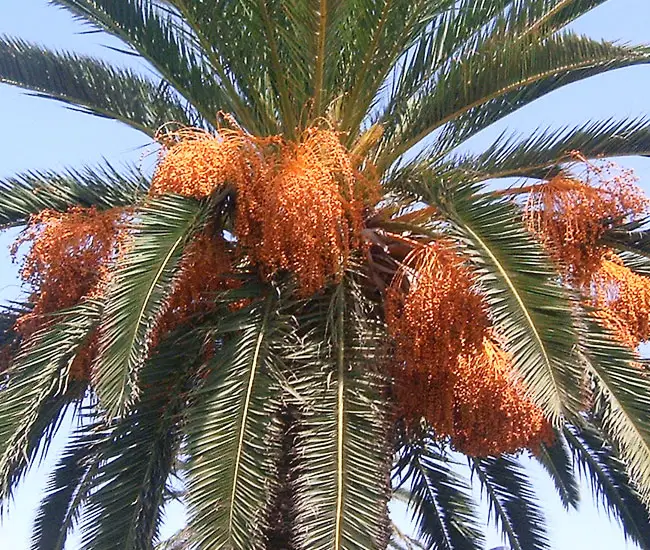
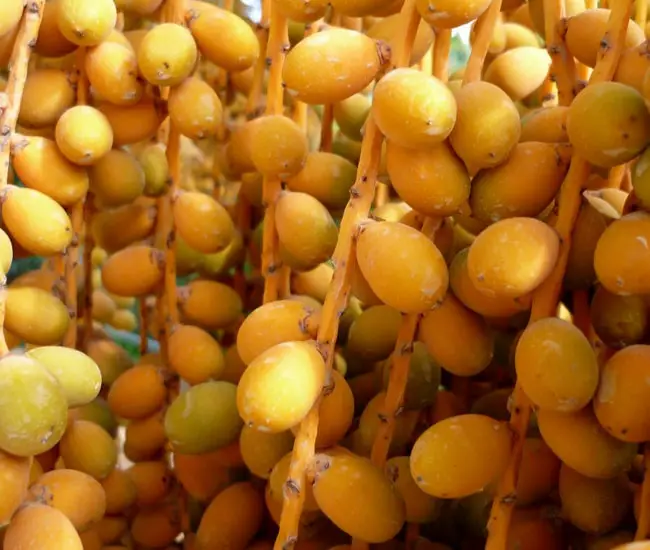
The Canary Date Palm produces small, inconspicuous flowers that are typically creamy or yellowish-white in color. These flowers are arranged in dense clusters that emerge from among the palm’s leaves. While individually not particularly showy, the collective display of these blossoms adds to the palm’s aesthetic appeal.
Following successful pollination of the flowers, the Canary Date Palm gives rise to small, date-like fruits. These fruits are initially green and gradually transition to a bright orange or reddish-orange hue as they ripen.
Each fruit measures about 1 to 1.5 inches in length and has an oblong shape. While these dates are technically edible for humans, they are not typically grown for consumption and are often considered less palatable than dates from other palm species.
Despite their limited culinary appeal, the small fruits are highly attractive to wildlife, including birds and insects, which play a role in pollination and seed dispersal. In their native habitat, these fruits are an essential food source for various wildlife species, contributing to the ecosystem’s biodiversity.
How to Care For Canary Date Palm
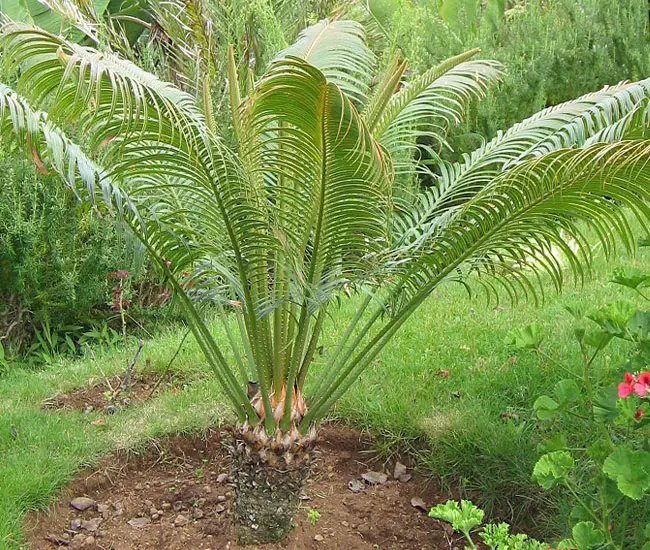
This palm requires regular maintenance since it doesn’t shed its dead leaves naturally. If you neglect to remove these dead fronds, you’ll find them hanging beneath the palm’s canopy, leading to a less-than-ideal appearance.
Proper pruning is essential to maintain its beauty, and it’s worth noting that the base of the crown resembles a nut, giving rise to the nickname “Pineapple Palm.”
The Phoenix canariensis is a massive palm tree that can attain heights of up to 40 feet and a width of 15-20 feet. It exhibits a commendable tolerance to cold temperatures, withstanding as low as 15-20 degrees Fahrenheit.
Additionally, it can endure periods of drought once it reaches maturity, making it suitable for USDA Zones 8b (15 to 20 F) to 11 (above 40 F).
While the Canary Date Palm thrives in full sun, it can also survive in partial shade. It favors well-drained soil with adequate moisture content and exhibits a remarkable ability to withstand drought conditions.
To prevent nutrient deficiencies, it is advisable to use high-quality palm fertilizer with a continuous-release formula, applying it twice annually during the growing season.
This palm is generally resilient, but it may occasionally face challenges from pests and issues such as Palmetto weevils, palm-leaf skeletonizer, lethal yellowing, magnesium deficiency, ganoderma, sigmina leaf spot, graphiola false smut, and phytophthora bud rot.
Canary Date Palm Pictures
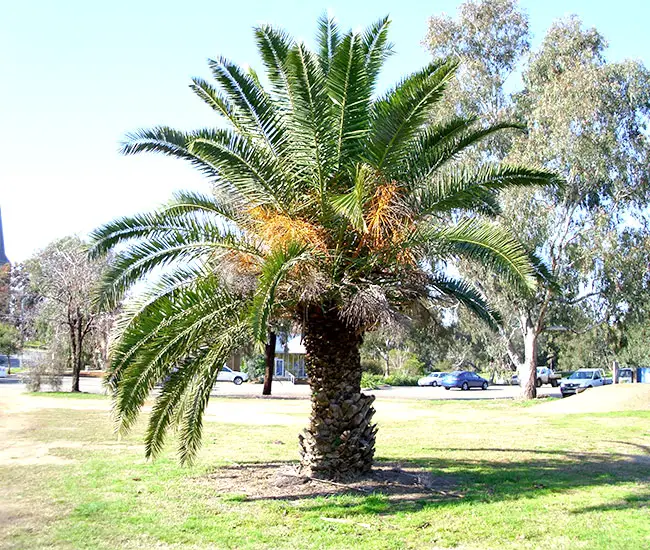
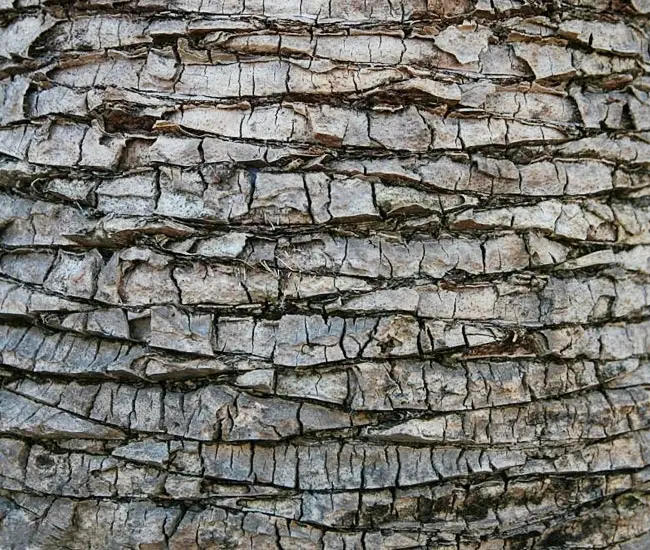
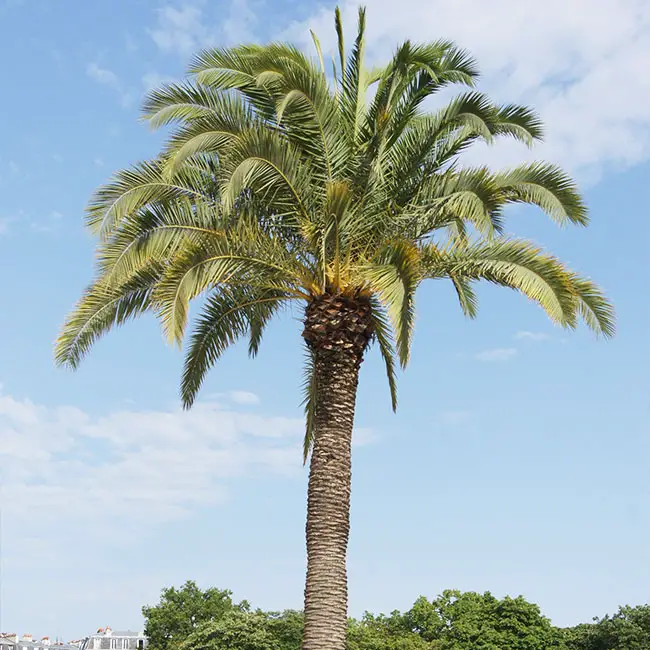
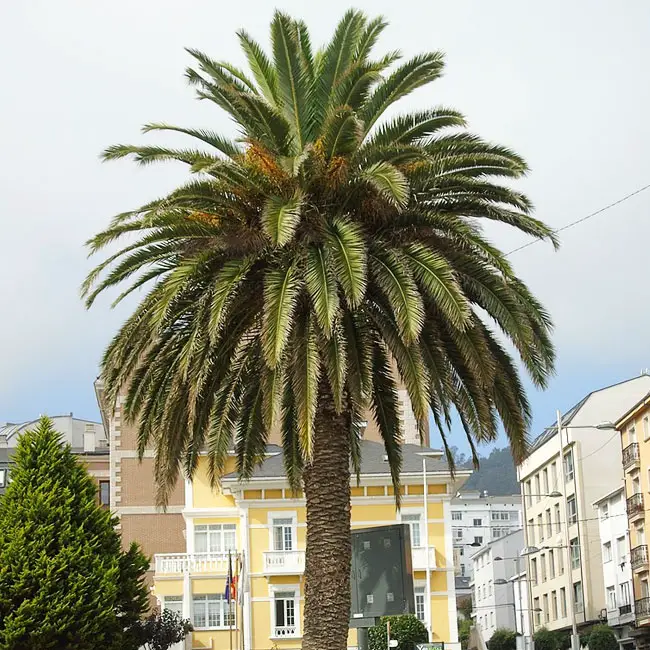
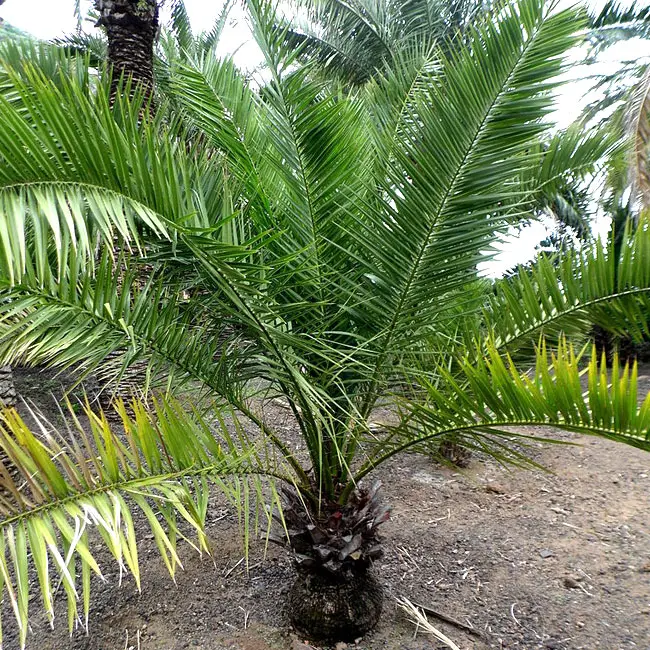
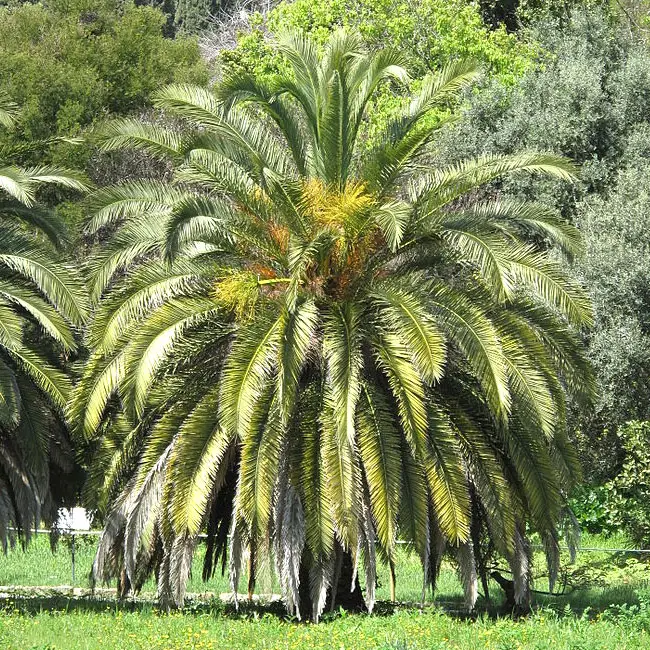
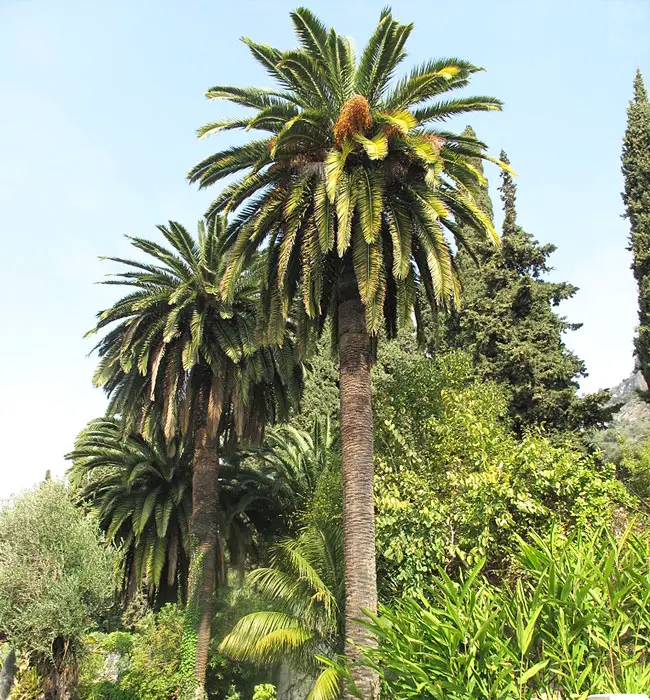
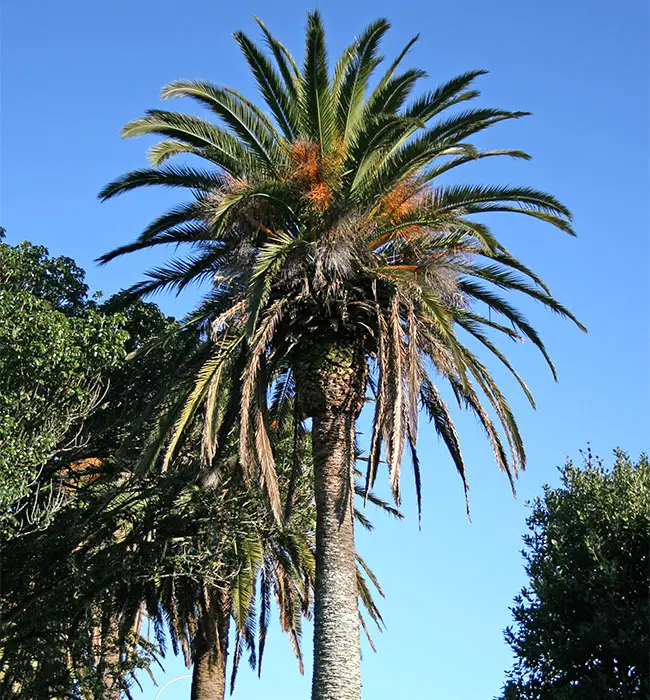
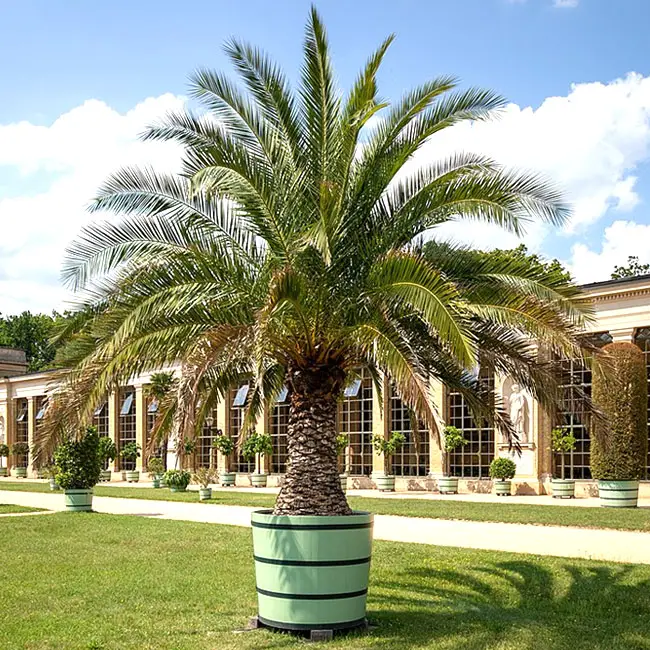
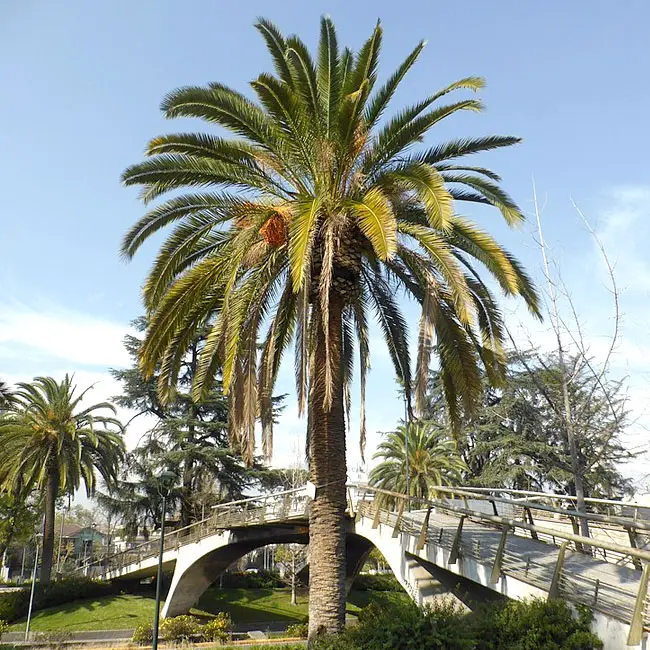
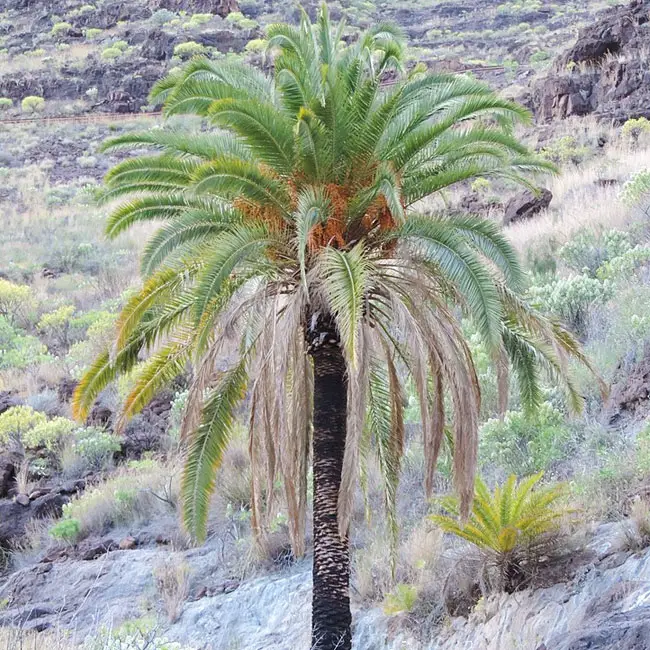
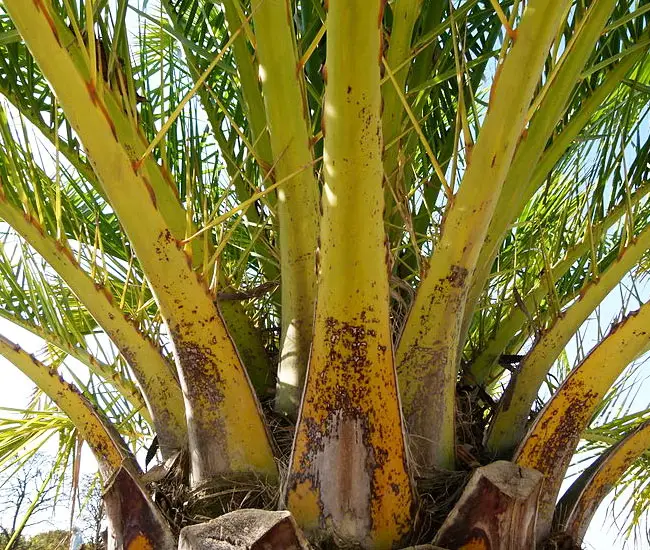
More information can be found on EDIS and Floridata sites.


I leave in San Antonio do you know if this type of trees will survive or grow in that area?
How much should canary palms be watered? Gallon wise and how often? I have to 25ft canary palms and I’m worried because the tips of the fronds about a foot down on the new ones are burnt or dead looking, What might be the cause? Thanks
I have 2 15 foot canary palms and the ends of the frowns are turning brown and are much smaller than the rest of the frown – any ideas?
I Am looking for canary date palm tree